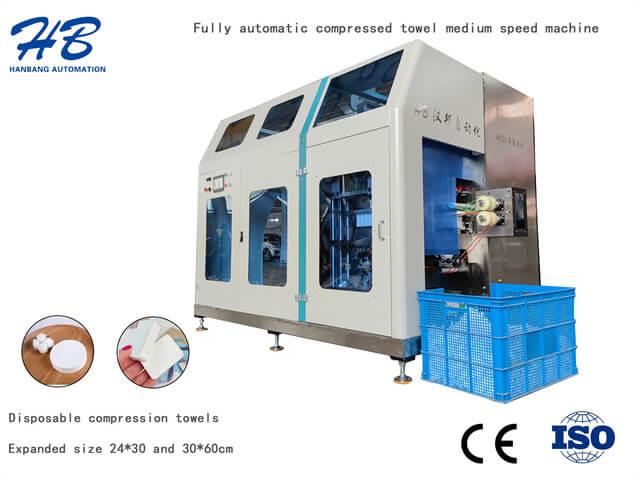Author:HB Nonwoven MachineryFROM:Compressed Towel Machine Manufacturer TIME:2023-11-09
Non-woven fabric cutting machines play a crucial role in the hygiene industry, particularly in the production of diapers and sanitary napkins. These machines are designed to precisely cut non-woven fabrics into specific shapes and sizes, ensuring the production of high-quality products. In this article, we will guide you on how to install a non-woven fabric cutting machine, step by step.

Prior to installing the non-woven fabric cutting machine, it is essential to prepare the workspace appropriately. Clear any clutter and ensure there is enough space for the machine and operator to work comfortably. Make sure the area is well-lit and properly ventilated to maintain a safe and productive working environment.

Start by unpacking the machine and organizing the various parts. Follow the manufacturer's instructions to assemble the machine correctly. This typically involves attaching the cutting blades, adjusting the tension settings, and securing the necessary components in place. Be sure to tighten all screws and bolts firmly to ensure stability during operation.

Next, connect the non-woven fabric cutting machine to the power source and air supply. Ensure that the power voltage matches the machine's requirements and use the appropriate power cord. Additionally, connect the air compressor to the machine if it requires compressed air for certain functions, such as blade oscillation. Test the connections to verify proper functionality.
Once the machine is connected, you need to adjust the cutting parameters according to your specific needs. This includes setting the cutting speed, blade pressure, and blade angle. These adjustments may vary depending on the type and thickness of the non-woven fabric being used. Consult the machine's manual for guidance or seek assistance from a technical expert.
Before starting production, it is crucial to conduct a test run to ensure all settings are correctly configured. Load a sample piece of non-woven fabric onto the machine and initiate the cutting process. Observe the cutting quality and make any necessary adjustments to achieve the desired results. Repeat this process until the machine consistently delivers the expected performance.
When operating the non-woven fabric cutting machine, it is important to prioritize safety. Ensure that all safety guards and features are in place and functional. Provide appropriate personal protective equipment (PPE) to operators, such as gloves and safety glasses. Train employees on the proper operation of the machine and the importance of adhering to safety protocols.
To keep the non-woven fabric cutting machine in optimal condition, regular maintenance is essential. Create a maintenance schedule and perform routine tasks such as cleaning, lubricating moving parts, and inspecting for wear and tear. Address any issues promptly to prevent breakdowns and ensure the longevity of the machine.
Lastly, strive for continuous improvement in your non-woven fabric cutting process. Monitor the machine's performance, collect data, and analyze it to identify areas for enhancement. Explore technological advancements and industry best practices to stay updated and enhance the efficiency and productivity of your operations.
Installing a non-woven fabric cutting machine requires meticulous preparation, assembling, and adjustment to ensure optimal performance. By following the steps outlined in this article, you can set up the machine correctly and produce high-quality cut pieces of non-woven fabric for diapers and sanitary napkins. Remember to prioritize safety, perform regular maintenance, and continuously seek improvement to stay competitive in the hygiene industry.





